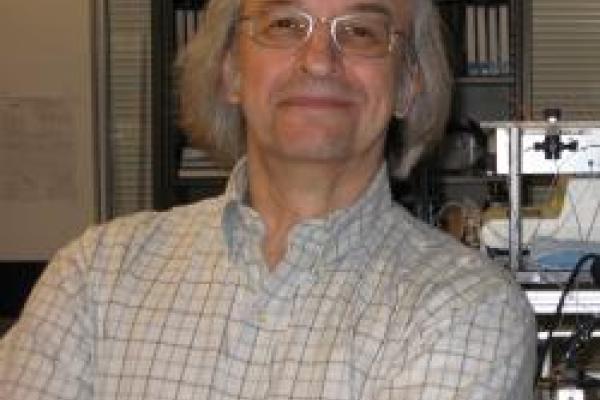
We can now watch individual proteins acting on single molecules of DNA. Visualization is achieved by capturing a single DNA molecule with optical traps or by tethering to a glass surface. Proteins are visualized via fluorescent reporters, and molecules are manipulated using microfluidic flowcells. Using these approaches, we have imaged proteins functioning in the repair of broken DNA.
As examples, I will show that the heterogeneity in translocation velocities of RecBCD helicase is actually an atypical manifestation of expected ergodic behavior. Next, I will present imaging of the search for DNA homology conducted by the RecA, a process that had remained elusive for almost 30 years; single-molecule analysis revealed that the search occurs by “intersegmental contact sampling”, wherein the randomly coiled structure of DNA is essential for reiterative sampling of DNA sequence identity, and serves as an example of molecular parallel processing. Finally, direct visualization of the self-assembly of RecA on DNA shows that it occurs by nucleation and growth, not unlike crystallization or condensation. Furthermore, we discovered a class of proteins that catalyze both nucleation and growth of filaments, revealing how the Nature controls assembly of this protein-DNA complex.
Forget, A.L., Dombrowski, C.C., Amitani, I., and Kowalczykowski, S.C. (2013). Exploring protein-DNA interactions in 3D using in situ construction, manipulation, and visualization of individual DNA-dumbbells with optical traps, microfluidics, and fluorescence microscopy. Nature Protoc., 8, 525-538.
Liu, B., Baskin, R.J., and Kowalczykowski, S.C. (2013). DNA Unwinding heterogeneity by RecBCD results from static molecules able to equilibrate. Nature, 500,482–485.
Forget, A.L. and Kowalczykowski, S.C. (2012). Single-molecule imaging of DNA pairing by RecA reveals a 3-dimensional homology search. Nature, 482, 423–427.
Bell, J.C., Plank, J.L., Dombrowski, C.C., and Kowalczykowski, S.C. (2012). Direct imaging of RecA nucleation and growth on single molecules of SSB-coated ssDNA. Nature, 491, 274-278.
